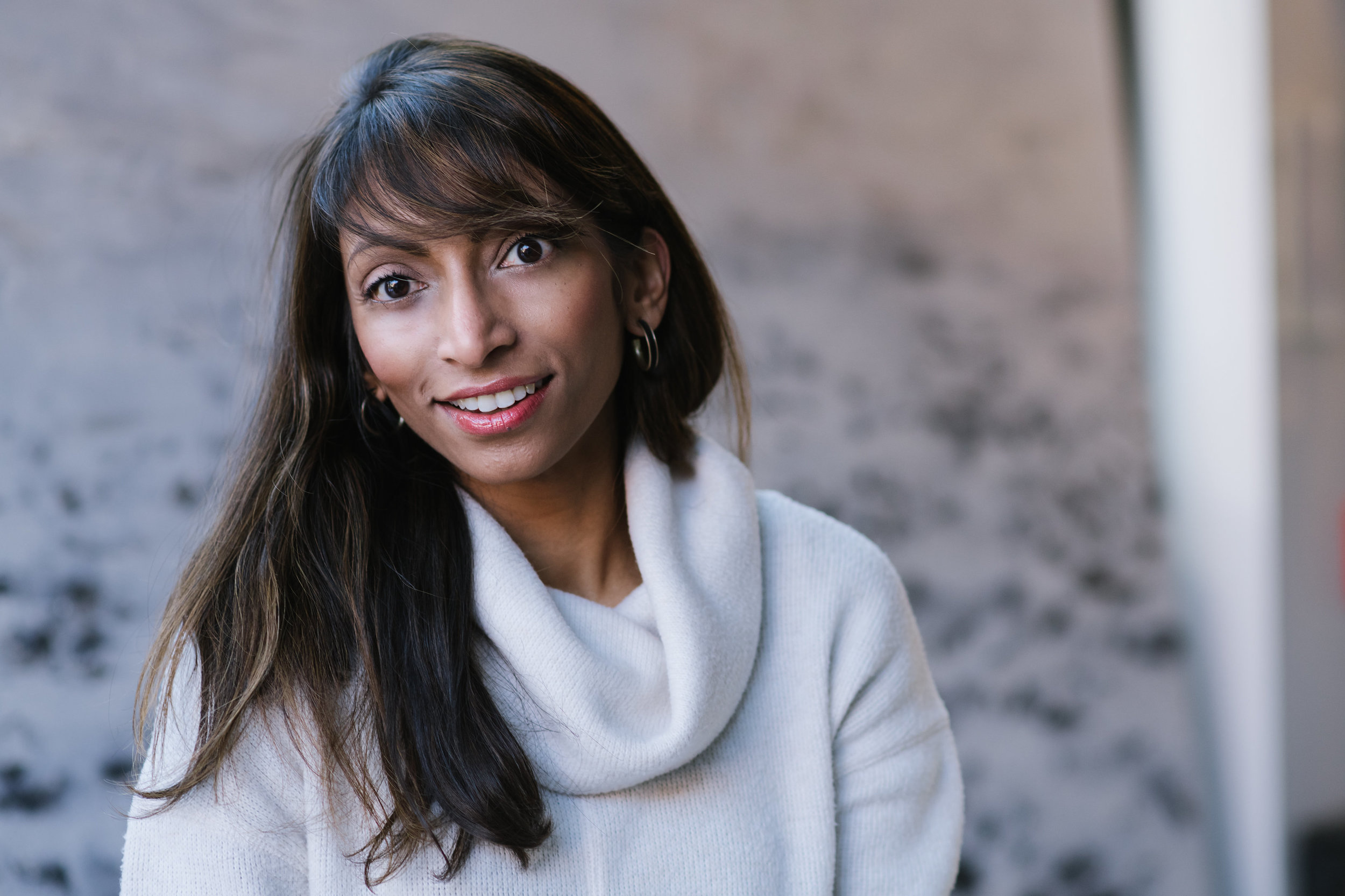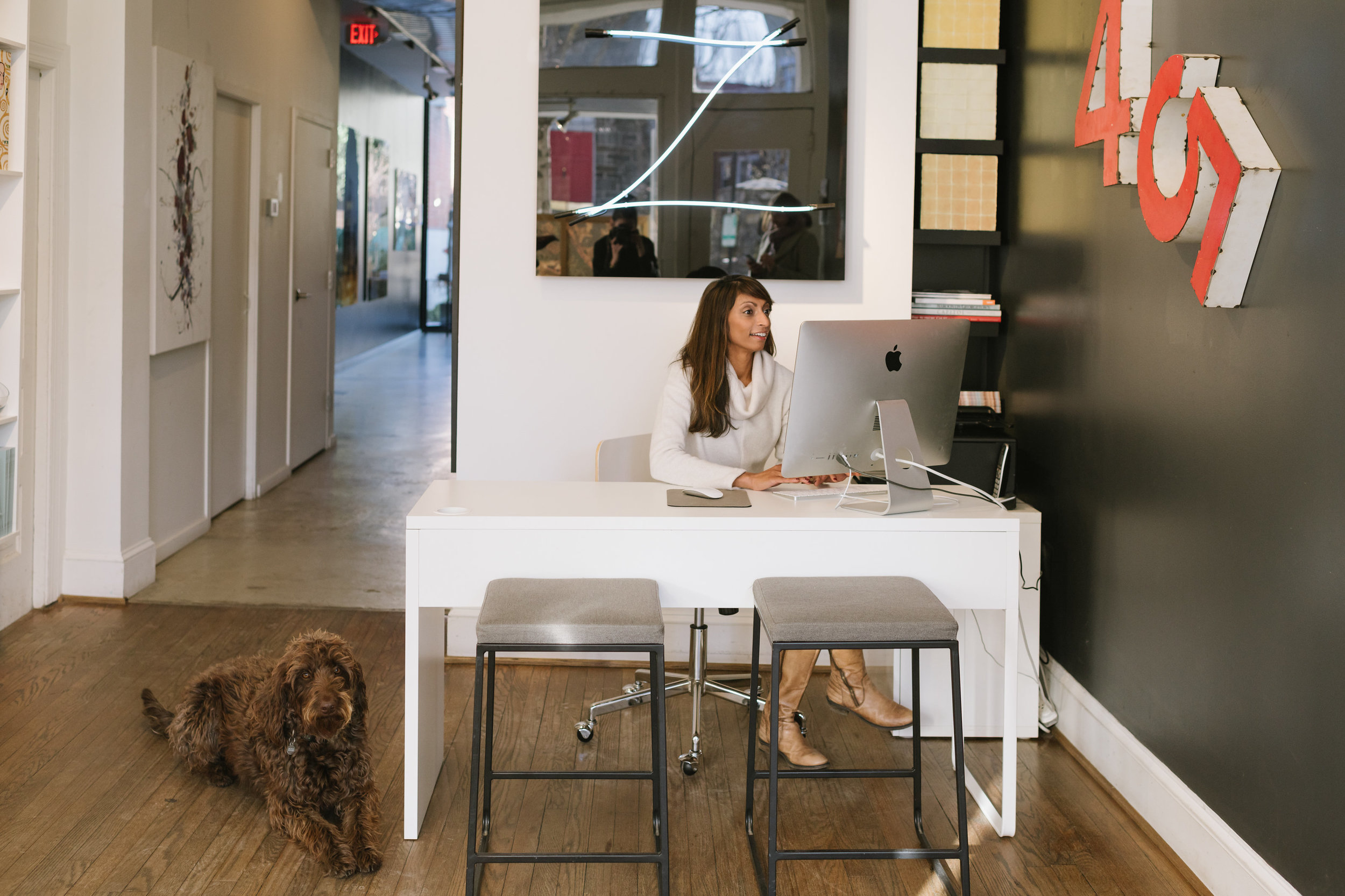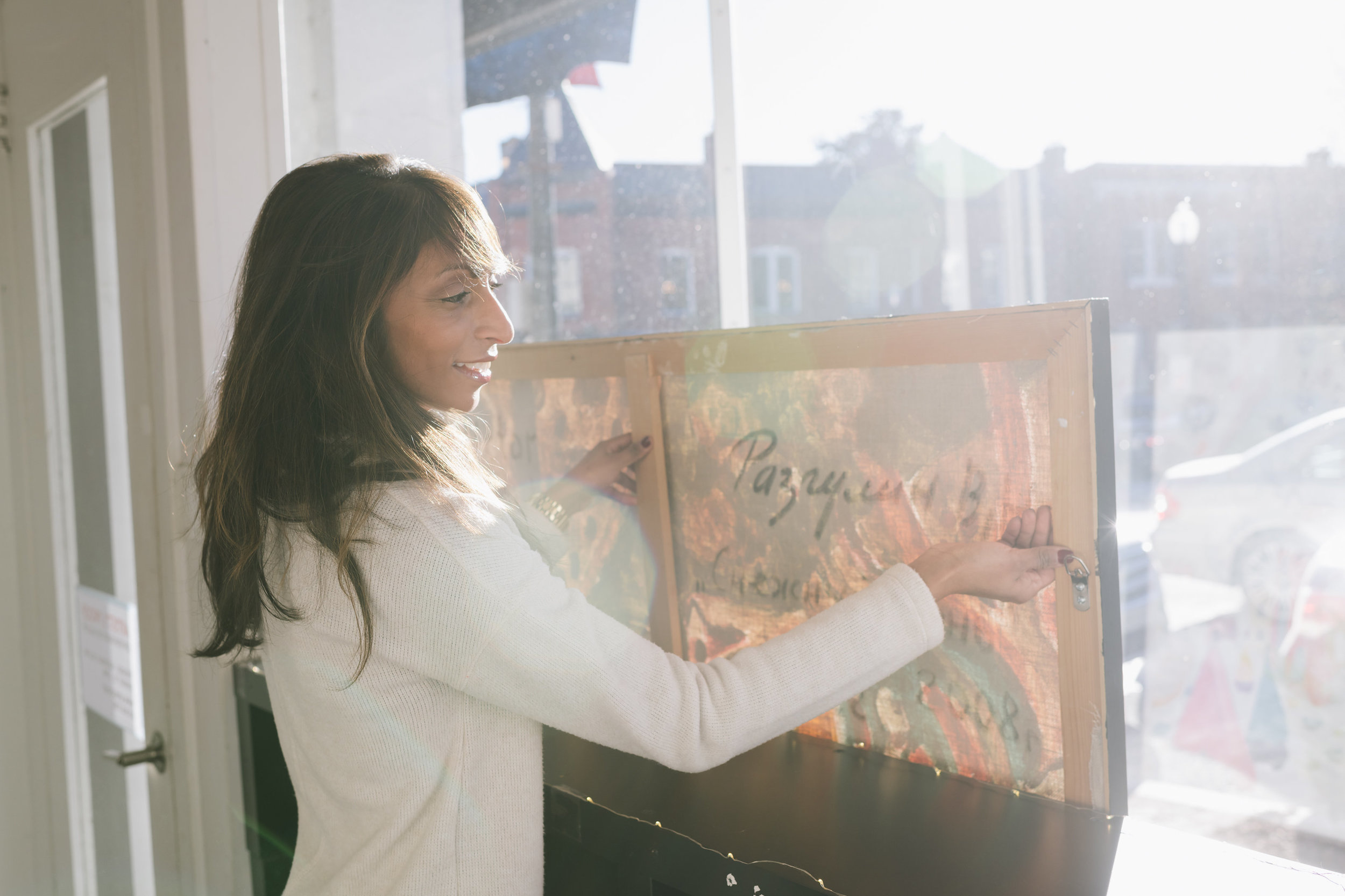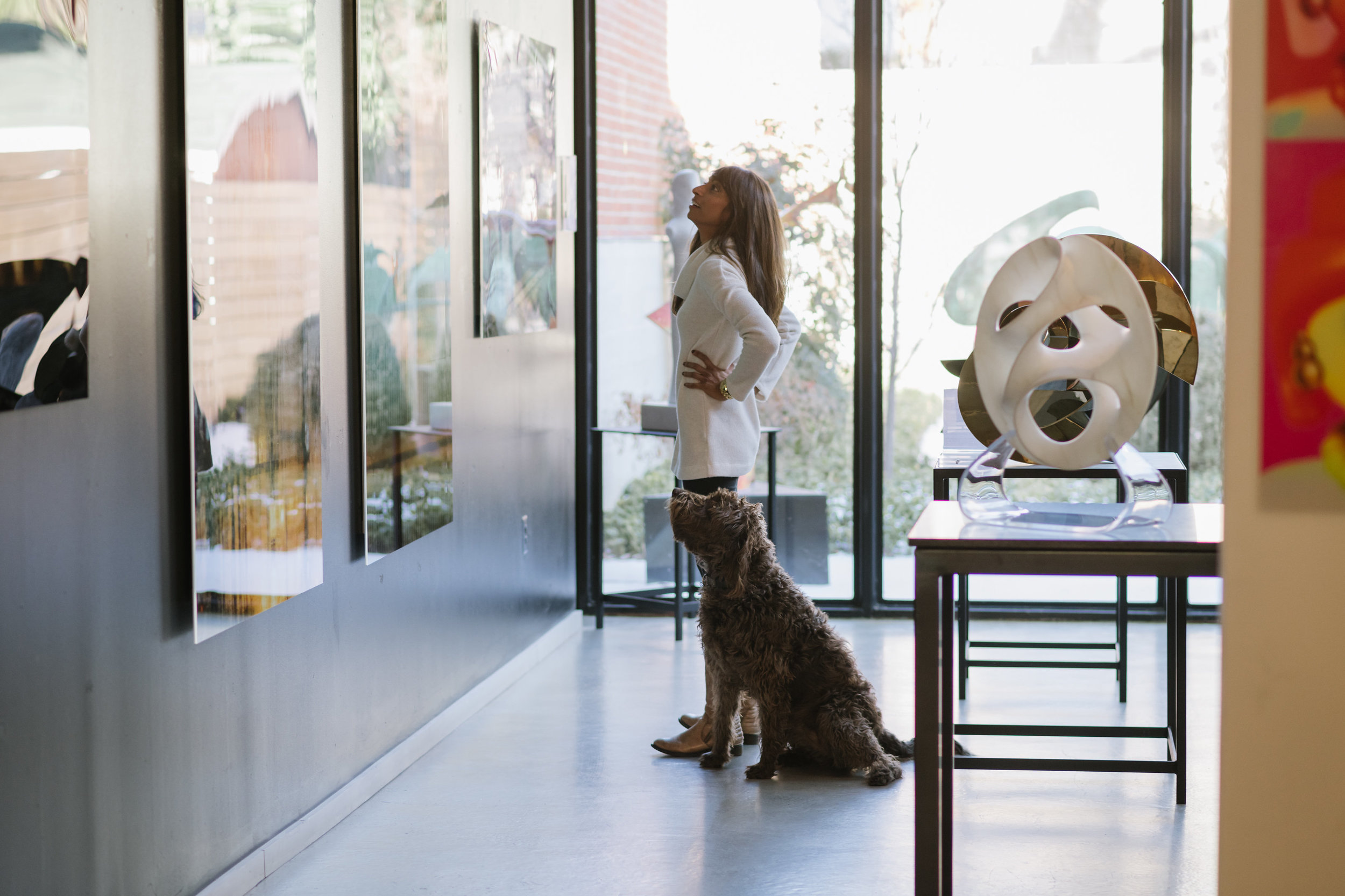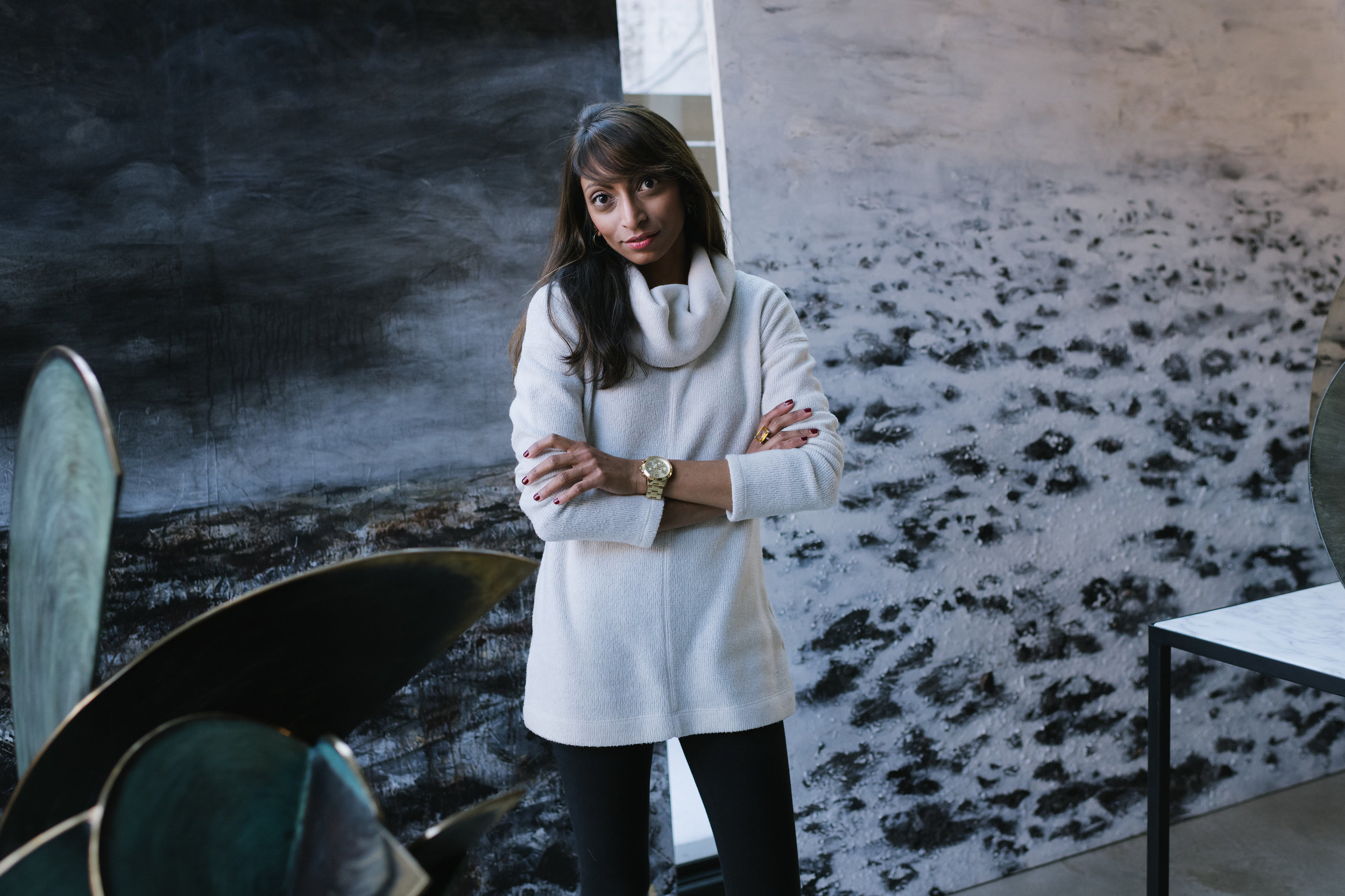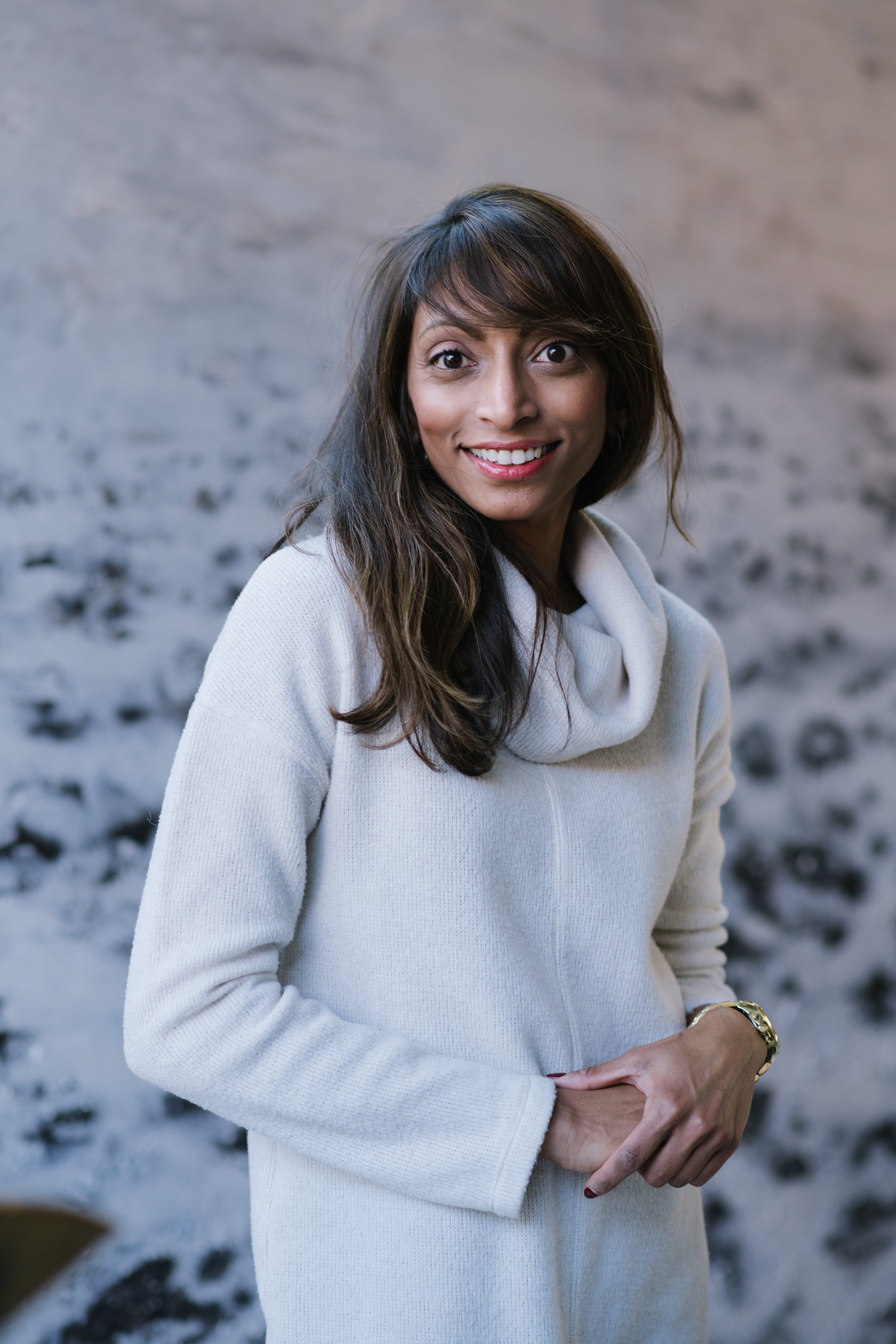‘I Look at Every Work Like a Little Miracle’
During her senior year at a Catholic school in Singapore, Peggy Sparks sat across from Father Gerrad Keane. The Irish Jesuit priest had one more lesson to teach her.
‘He knew I wasn’t very religious and he said, ‘You might not have faith, but never lose your sense of awe.’ He told me this when I was 18 years old and I’ve never forgotten it. That’s how I try to approach the world, and art is one of those things.’
Peggy grew up in a loving family with modest means on the other side of the world; another world from her current life as the owner of Artist’s Proof gallery. As soon as she discovered a globe, Peggy began a running list of places she wanted to visit. Right before college, she saved enough for a plane ticket to Thailand. There, she discovered her life’s passion.
‘You don’t think about art in your safe space. When you travel you realize that the art you see is such a reflection of the culture you’re visiting. I started to buy a painting from every place I visited, and that’s how I started to get really excited about it.’
The oldest of three, Peggy became the first member of her extended family to attend university. She couldn’t paint, but wanted to pursue a post-collegiate career that would keep her as close to the art world as possible, and accepted her first job at a gallery in Singapore. Fluent in Mandarin, Peggy conducted research and wrote about emerging artists from the region.
Over the next decade, she continued to honor her parents’ sacrifices by living out her dream—moving to Malaysia, Shanghai and Dubai, where she worked in galleries and completed a program in Chinese studies.
It was in Shanghai that Peggy met her husband, a Midwesterner on a business trip. They spent the next two years trading 18-hour flights to visit one another.
‘Skype wasn’t a big thing then, so the bills were astronomical. They were the cost of a plane ticket. We had to figure out a way to live in the same place.’
Peggy could work from anywhere, and in 2012—after many discussions and disagreements—they agreed to move to the one place she was familiar with in DC.
‘Anywhere in Asia, you know DC. And in DC, you know Capitol Hill because that’s where the Capitol is, and you know Georgetown.’
Six months after moving to Georgetown, Peggy walked past an available space on the 1500 block of Wisconsin Avenue. She never considered diving into the commercial art business, and pictured herself doing curatorial work for a gallery or museum.
‘My husband was like, ‘Peggy, you’re in America. Just open your own thing.’ I was very hesitant as a conservative Asian. I was like, ‘This is expensive, it’s Georgetown, it’s going to be crazy.’ But then I explored it a little more.’
Peggy found amazing partners in Eastbanc, who believed in the business idea, and relied upon her relationships with artists from around the world who were willing to take a leap of faith and send her their work at no cost. While Peggy consigned works from every corner of the globe, she also began meeting local artists and building up an impressive database of DC talent.
The DC art scene presented its own set of challenges, though. The artists were there, but the support wasn’t.
‘Every three streets in New York you have a gallery, and you don’t have to work as hard as you do here to sell. In DC, there aren’t enough commercial art spaces, and the artists don’t have the platform. Clients tend to go to New York to buy the art, or travel to Paris, and the museums engage artists from New York, LA or Europe. You have a huge affluent population that does not support the local art scene. There’s a dissonance.’
In her fifth year—the first two spent in Cady’s Alley while the Wisconsin Avenue space was under construction—Peggy feels like she’s finally hitting her DC stride. The contemporary gallery sells pieces that Peggy says are meant to be conversations and insights, rather than just depictions.
‘We’re about exploring what’s next. We relook at the world.’
Peggy says today’s political unrest has pushed people beyond the spaces they once considered comfortable. It’s in that new space that artists create.
‘When you come from a place that’s not always so political or socially active, there isn’t a motivation to move out of your boundaries. Obviously there is a lot of nervousness and unrest right now, but there is so much to work with. I’m seeing that now in DC. When you talk to artists, they’re so motivated. Everything takes on a little more meaning.’
At Artist’s Proof, that meaning extends to each piece of art and its coinciding show—from a live demonstration of a nude model painting, to a drag performance. Peggy says the goal is to make every show workshop-focused, which has attracted a younger audience than one might expect.
As more art galleries close every month, Peggy’s exhibitions are part of a revamped business model. Artist’s Proof does 50% of its current business online, and spends more of its budget on marketing. It’s the only way to compete with the access and price transparency available on the Internet.
Financially, Peggy says it would make more sense to move to Capitol Hill or Shaw, but she’s not willing to lose the Georgetown address. She also recognizes she’s not in the business of getting rich.
‘The first few years I was so constrained by trying to make the business financially successful. And then I came to a point where I said that’s just not enough to satisfy me professionally. I started only acquiring artists because I truly believed I could take their career to the next level, and I think they have something amazing to say to a greater audience. And at the end of the day, I think we all want to look back and say, ‘Did I do something for me, or did I do something for my community?’ Success can be measured in the relationships that we build that extend beyond the money we make.’
After years as a gallerist, Peggy still reveres her artists’ work—looking at each like a ‘little miracle.’ A miracle that, by definition, requires faith.
Father Keane's words come back to her again.
‘In awe, there is God.’
